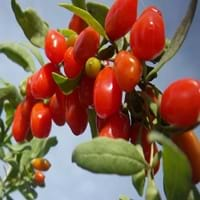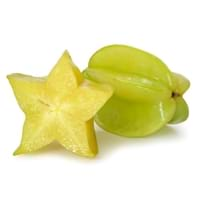Health Benefits
Anti-oxidant properties, Eye care, Helps in cartilage regeneration, Regulates Blood Sugar, Treatment of osteoarthritis
Cancer prevention, Heat stroke treatment
General Benefits
Boosts immune system, Digestive aid
Anti oxidant properties, Anti-inflammatory properties, Digestive aid, Maintains healthy cholesterol level, Treatment of sore eyes
Skin Benefits
Anti-aging benefits, Reduces wrinkles, Treatment of skin diseases
Anti-aging benefits, Heals sunburn, Skin rejuvenation
Hair Benefits
Protects hair, Regulates hair growth
Promotes longer and healthier hair, Protects hair
Allergy Symptoms
Anaphylaxis, Itching, Sneezing, Wheezing
NA
Side Effects
May interact with some drugs
Nausea, Vomiting
Best Time to Eat
Any time except an hour after meal, Don't consume at night and before bed
As a snack in the late afternoon, Eat the fresh ones, avoid mixing with any other foods, don't eat after meal., Strictly avoid empty stomach
Vitamin B5 (Pantothenic Acid)
Vitamin C (Ascorbic Acid)
Vitamin K (Phyllochinone)
Phytosterol
Not Available
Calories in Fresh Fruit with Peel
Calories in Fresh Fruit without Peel
Not Available
Not Available
Calories in Frozen Form
Not Available
Calories in Canned Form
Not Available
Not Available
Calories in Jam
Not Available
Calories in Pie
Not Available
Season
Autumn
Autumn, Spring, Summer
Varieties
No Types
King, Bell, Sri Kembangan, Arkin and Fwang Tung
Color
Scarlet red
Golden yellow, Green
Inside Color
Orange
Yellowish Green
Shape
Oval
Oval and Star(Cross section)
Taste
Slightly bitter, Tart
Crisp, Juicy, Sweet
Grows on
Trees
Not Available
Soil Type
Well-drained
Loam, Well-drained
Climatic Conditions
Cold, Hot
Moist, Warm to hot climate
Facts about
- Study says a man named Li Qing Yuen used to eat goji berries daily and lived for 252 years.
- They are also known as wolfberries in India & China.
- This fruit is used for spiritual purposes at many places.
- When carambola is cut horizontally, it forms a star.
- It is believed that carambola helps to cure hangover.
- Entire carambola is edible, including its skin.
- 2 varieties of carambola are cultivated: tart & sweet.
Top Producer
China
Taiwan
Other Countries
Canada, France, India, United States of America
Australia, Guyana, India, Israel, Malaysia, Philippines, United States of America
Top Importer
United States of America
Europe
Top Exporter
China
Malaysia
Botanical Name
Lycium barbarum
Averrhoa carambola
Synonym
Wolfberry
Not Available
Subkingdom
Tracheobionta
Tracheobionta
Division
Unknown
Magnoliophyta
Class
Unknown
Magnoliopsida
Subclass
Asteridae
Rosidae
Order
Solanales
Oxalidales
Family
Solanaceae
Oxalidaceae
Species
L. barbarum
A. carambola
Generic Group
Not Available
Not Available
Difference Between Gojiberry and Carambola
We might think that Gojiberry and Carambola are similar with respect to nutritional value and health benefits. But the nutrient content of both fruits is different. Gojiberry and Carambola Facts such as their taste, shape, color, and size are also distinct. The difference between Gojiberry and Carambola is explained here.
The amount of calories in 100 gm of fresh Gojiberry and Carambola with peel is 32.00 kcal and 31.00 kcal and the amount of calories without peel is Not Available and Not Available respectively. Thus, Gojiberry and Carambola belong to and category.These fruits might or might not differ with respect to their scientific classification. The order of Gojiberry and Carambola is Solanales and Oxalidales respectively. Gojiberry belongs to Solanaceae family and Carambola belongs to Oxalidaceae family. Gojiberry belongs to Lycium genus of L. barbarum species and Carambola belongs to Averrhoa genus of A. carambola species. Beings plants, both fruits belong to Plantae Kingdom.









